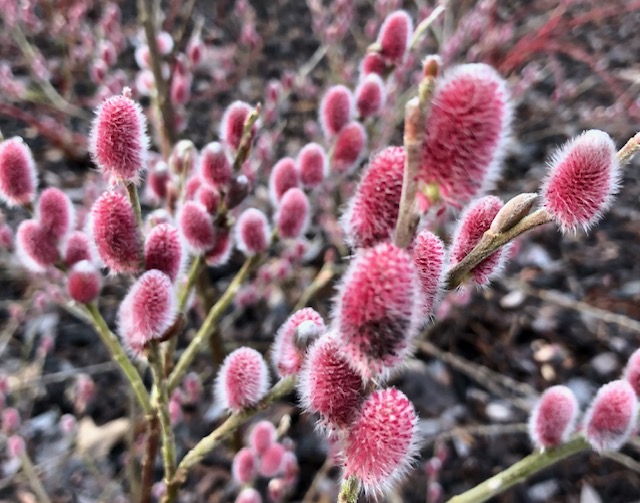
Things are turning a bit nippy, aren’t they, even down here on the balmy south coast! Frankly, it’s a welcome relief after all the endless rain.
This may be the quieter side of the year horticulturally speaking, but there are still jobs to do like making more shrubs for free, tending your garden furniture and planting bare-root shrubs, so put on thick coats, socks and scarves and get on with it…
Hardwood cuttings aren’t hard!
I was walking around a well-known garden centre the other day and I was astounded at the high prices for some of the shrubs! Even quite ordinary ones cost a lot more than a couple of years ago. More reason than ever to propagate your own and it really isn’t difficult when you take them now as hardwood cuttings. You don’t need to protect them from the elements, you don’t need a greenhouse or any fancy equipment.
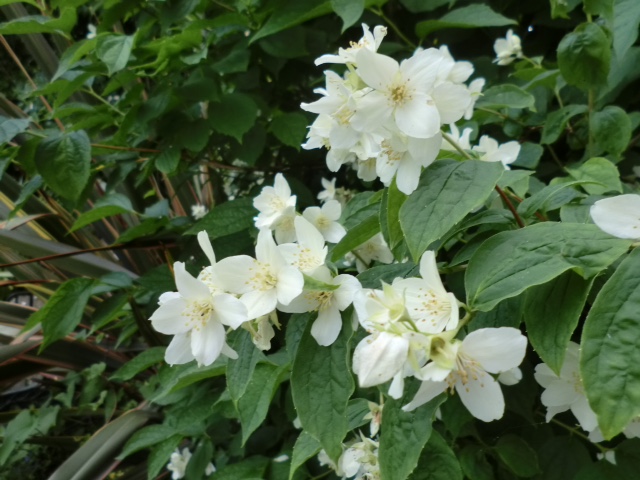
Come on, you can do this. Perhaps a pal has a shrub you covet? Or vice versa?
Try almost anything: dogwood, willow, Abelia, Euonymus, ornamental vines, honeysuckle, jasmine, Philadelphus, Physocarpus, Deutzia, Weigela, Hydrangea, flowering currant, roses…….And what about our wonderful feature pic this week? It’s Salix ‘Mt. Aso’ – which has a splendid Growbag story attached: Laura had it, and when hers died, Caroline took a hardwood cutting of her specimen and it GREW (that’s how easy this cuttings-lark is!), and Caroline was able to give Laura back this lovely plant! So do have a go, experiment with all sorts of things, even trees.
The plants have entered dormancy and it’s the perfect time to find stems of pencil thickness, cut them cleanly at a slant above a bud, and straight across below a bud at the bottom. The ideal length is about 1ft. (30 cm.) You can even make several cuttings from one stem. No twiddling about with basal heat, adjusting the humidity etc. with these cuttings – put them (right way up!) into a trench in the soil, with only about a third of the cutting above the soil, or in a large pot of sandy compost, several in a pot, and leave it out of the way somewhere. The lovely Burgon & Ball perennial spades, particularly the longer one, that we have in our online shop are IDEAL for making the trench, so do have a look at these brilliant tools.
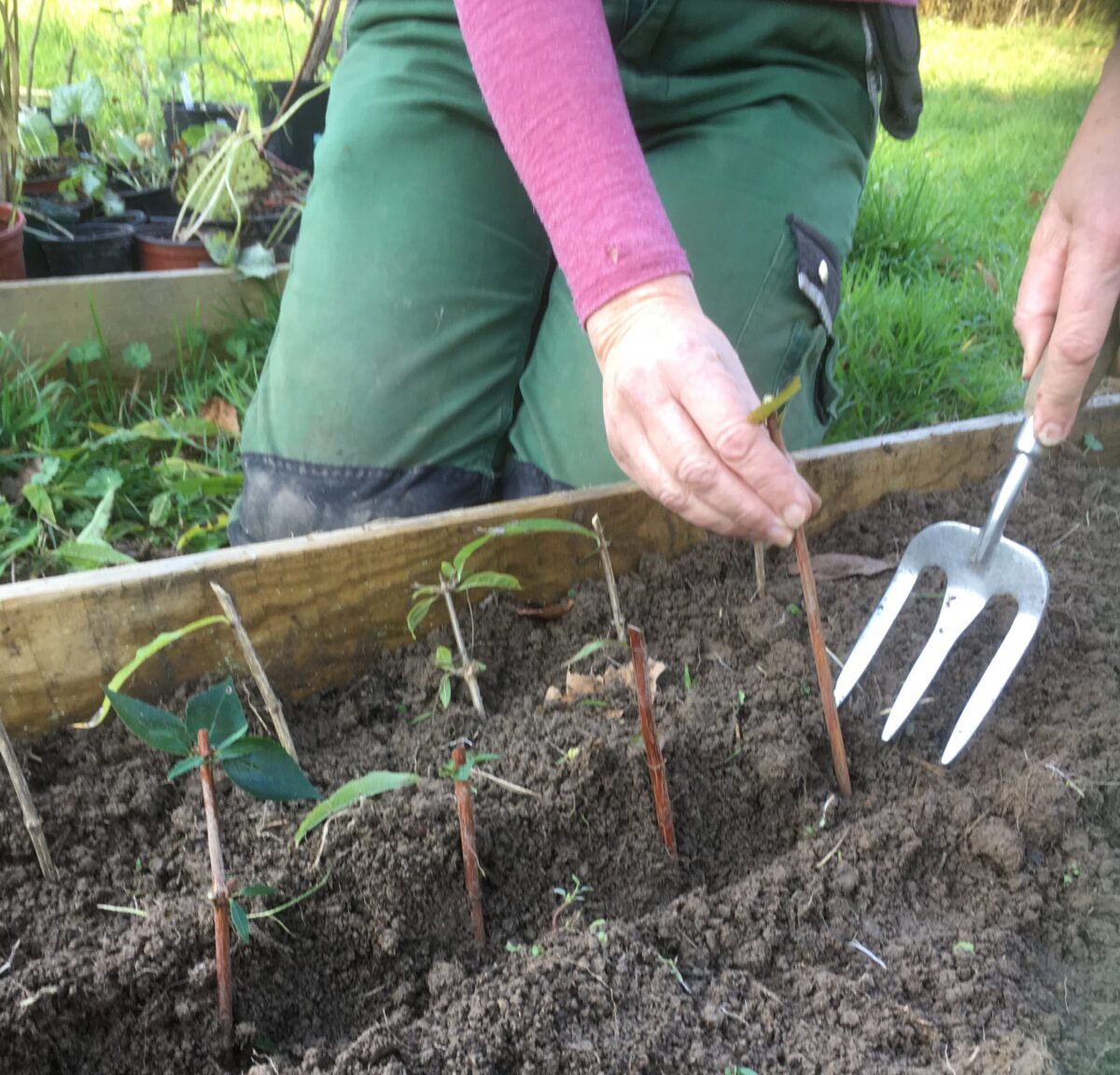
Here’s an important thing – LABEL THEM! That way you won’t stumble across them sometime next spring and have no idea what the little sticks are……ahem, who would do such a thing…….
Make sure that they don’t dry out, but otherwise that’s it. You might need a bit of patience because these cuttings are unlikely to create a decent root system in less than a year. You won’t get a shrub from every cutting, but some will take, and you will be able to transplant them next autumn.
Surely that’s worth half an hour of your time?!
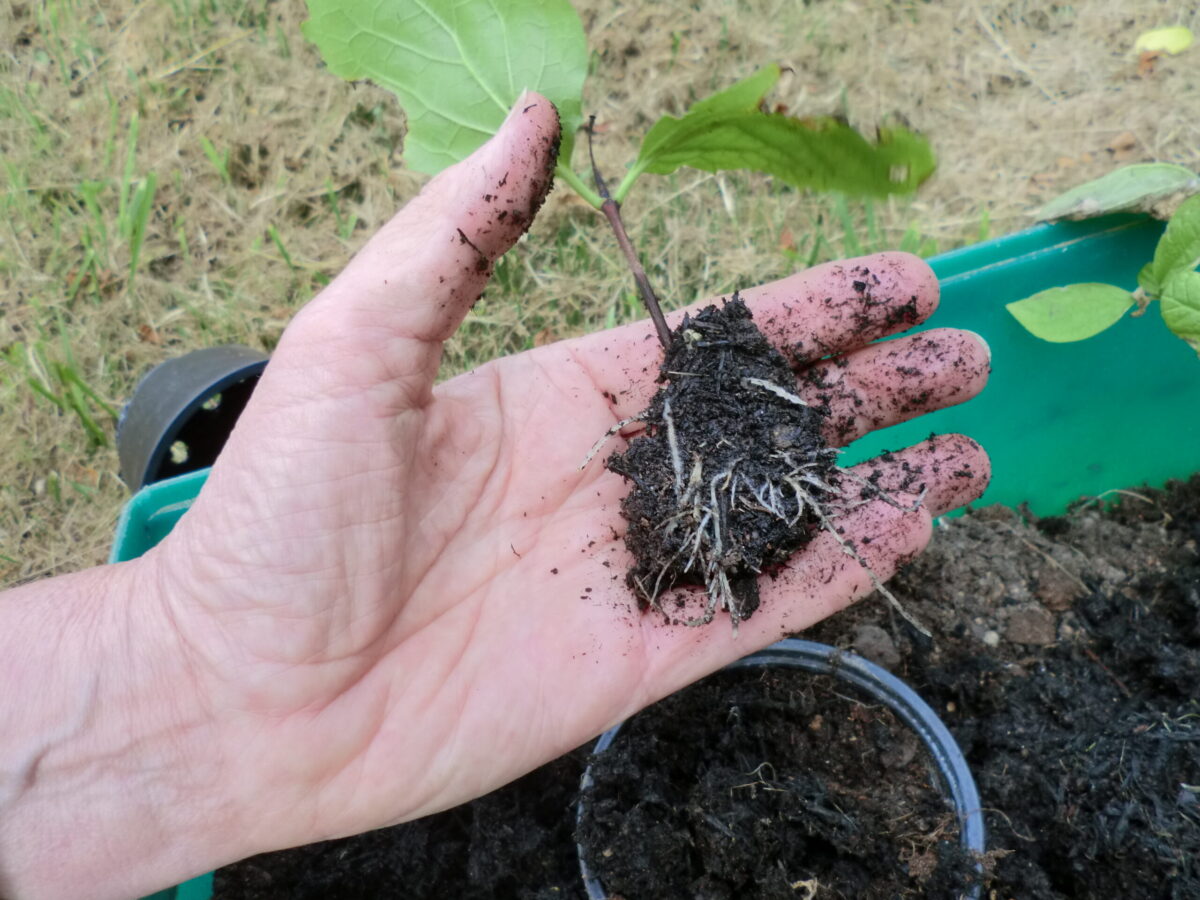
Bareroot brilliance
And now for more thrift – you can tell I spent too much at Christmas and on celebrating a SIGNIFICANT birthday this week, can’t you!
I was out with a local conservation group last weekend, digging up bare-root native saplings that had been biding their time in allotment beds ready for a big tree-planting project locally.
And it reminded me that bare-root trees, shrubs and roses will be available for a couple more months – plants that have been dug from the ground at the nursery during their dormant season and sold without a pot. They are generally cheaper to buy like this and I find that as long as they have been well-grown and never allowed to dry out, these bare-rooted plants often establish more quickly than potted plants do.
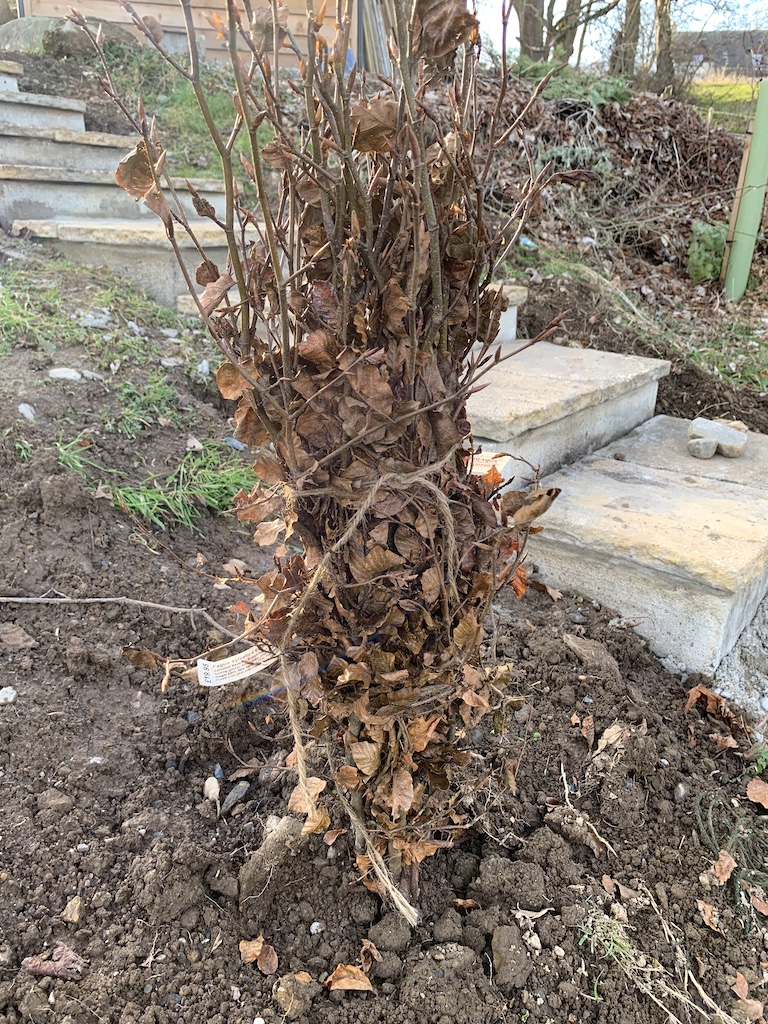
As soon as you get them, unwrap the roots and soak them in a bucket of water for a couple of hours.

Then it’s time for a bit of what’s called ‘formative pruning’, which will help the plant develop a good shape later and reduce the danger of windrock until the plant has anchored itself firmly in its new home. Don’t cut the main stem, or ‘leader’, of a bare-root tree or shrub, but take off any long, straggly or damaged growth, trimming any weak shoots hard, and strong shoots lightly. Also trim any very long roots which would otherwise need folding to put into the planting hole.
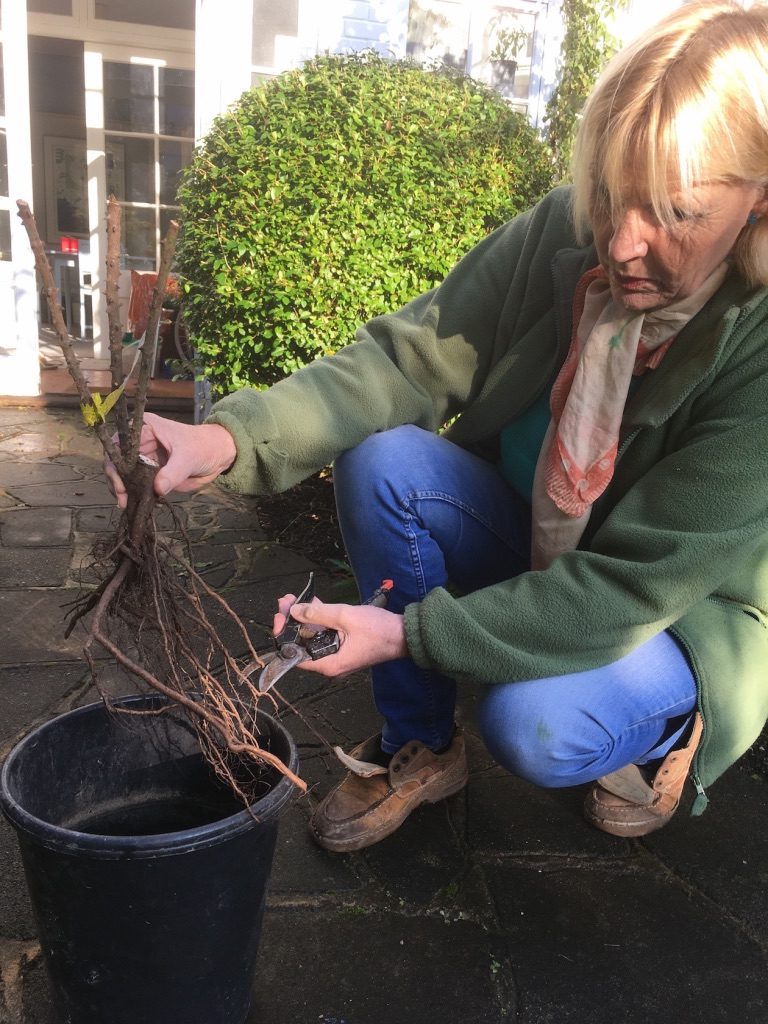
For the planting hole, digging it square is the accepted way these days of ensuring that the roots don’t just go round and round. Put in your plant at the same depth it must have been before and mix in some organic matter as you pack the soil back round the roots. Water it and put in a stake at an angle of 45 degrees if it is a windy spot – you want the base to stay firm but let the top of it wave about a bit which will strengthen it. A compost mulch over the top of the soil will seal in moisture and suppress weeds while your plant finds its feet.
If you can’t plant it immediately in its final position, plant it in a spare area of soil in the meantime (this is called ‘heeling in’). Giving your new shrub a little TLC now will reap dividends when it starts to grow away strongly next spring.
Gardening shorts
- The lovely little irises like I. reticulata and I.histrioides will be coming into flower in the next two months. They are very hardy but they will respond to a bit of ‘forcing’. So if you have them in pots outside, you can bring them into a greenhouse now, or cool bright room indoors, and enjoy their jewel-like blooms a little earlier than otherwise, to cheer up the drearier days of winter.
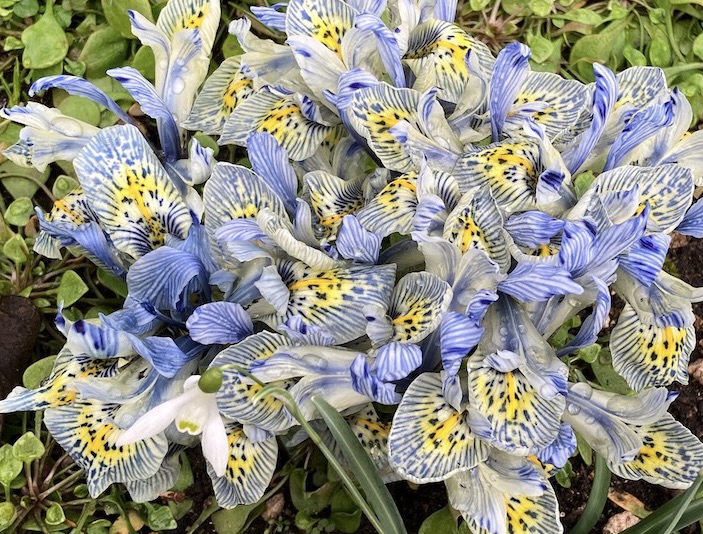
- I’ve bought my seed potatoes – whoopee! Have you got yours yet? Mine are now happily sitting in old egg-boxes on a cool bright windowsill ready to develop the little shoots, or ‘chits’, which will give them a head-start when I plant them out in the veg patch at Easter.
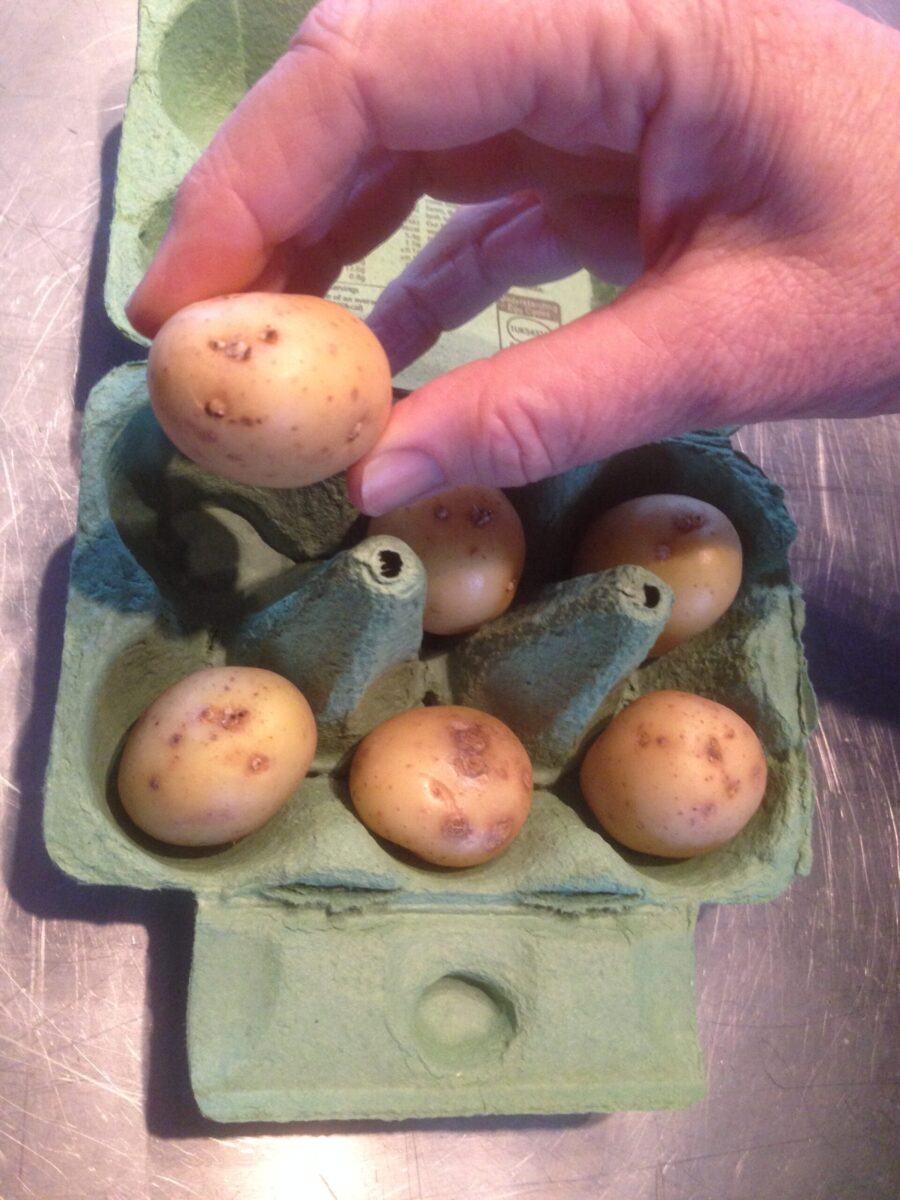
- As you might have guessed by this time, I am totally in charge of the ‘plant-y’ side of things in my garden, but my husband very gallantly takes on jobs like maintaining garden furniture, and this is a good time to do this. It won’t be long now before you’ll need it again, so give your outdoor chairs and tables a bit of TLC now – clean them with some warm water and a drop of detergent, and when they are totally dry, apply some timber preservative or furniture oil, using a rag. You’ll be impressed at the difference it makes!
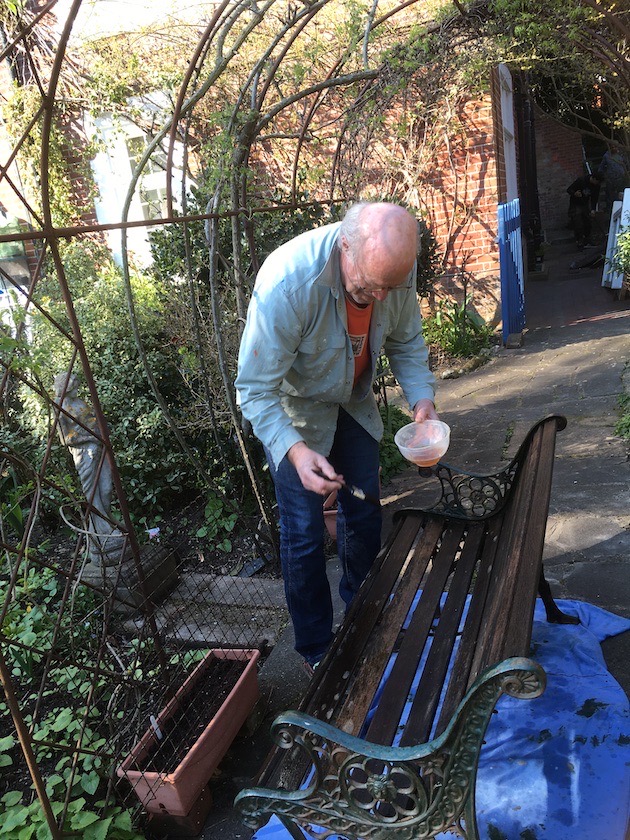
NB It’s time to be thinking about sweet pea sowing. Laura has put together a really comprehensive guide on the best way to do this for fabulous results. Click on this link to watch her in action.
More NB One of our wonderful followers David Sherlock has written in after we asked about recycling tips in an earlier article and it looked such a brilliant idea, we are delighted to pass it on to you:
“I use corrugated cardboard shredded to stamp size for composting instead of leaves and nitrogenous waste..A large box opened up and put around my compost bin with a tie, is keeping my worms warm and still working in this cold snap”.
Genius, eh!
More NB If you’re not already a subscriber and you’d like a bit more gardening chitchat from the3growbags, please type your email address here and we’ll send you a new post every Saturday morning.
Are you looking for a herb you can grow outdoors in winter and that’s a perfect flavouring for warming winter dishes? Look no further – this sage is one of Louise Sims’ Great Plants this Month!

